Athena (Advanced Telescope for High-ENergy Astrophysics) is Europe’s future X-ray space observatory designed to study the most extreme observable phenomena in the Universe, like galaxy clusters and supermassive black holes, at unprecedented levels of detail and sensitivity.
Key information
| Mission | Map hot gas structures and determine their physical properties. Search for supermassive black holes. |
|---|---|
| Domain | Science |
| Launch date | 2037 |
| Partners | ESA, X-IFU Consortium |
| Where | In orbit around the L1 Lagrange point 1.5 million km from Earth, between the Sun and Earth |
| Lifetime | 4 years, with option for possible extensions |
| Status | In development |
Key figures
- 2 instruments
- 9 arcseconds angular resolution
- 0.2-12 keV observing domain
- 3.5 eV spectral resolution
Key milestones
- 2037: Launch of Athena
- 2027: Mission scheduled for adoption by ESA
- 8 November 2023: ESA’s Science Programme Committee (SPC) decides to pursue mission with re-scoped architecture (studied from mid-2022 to end 2023)
- 27 June 2014: Selected for ESA’s Cosmic Vision programme
Project in brief
Part of Europe’s Cosmic Vision programme, Athena is the successor to XMM-Newton and Integral. This telescope’s observations will span the formation of the first black holes in the universe and large structures like galaxy groups and clusters. Its generalist design will also make Athena a powerful tool for studying a wide spectrum of astrophysical objects, from planets, supernovae and stars to binary systems, active galactic nuclei and gamma-ray bursts. Athena will be orbited by a European launcher in 2037.
X-rays, which are absorbed by Earth’s atmosphere and can therefore only be observed from space, tell us a great deal about the hottest regions of the universe and about black holes and their surroundings. Athena’s observations in the X-ray spectrum will answer two fundamental questions in modern astrophysics: How did matter assemble itself through cosmic time into the universe as we see it today? And how do giant black holes form, grow and shape the universe?
To fulfil its mission, Athena will be equipped with a new-generation X-ray telescope with two instruments at its focus: a spectrometer with high spectral and angular resolution (X-IFU) and a wide-field spectro-imager (WFI). These instruments and data analysis systems on the ground will be developed by two international scientific consortia including Japan and the United States.
CNES’s role
France is leading the X-IFU consortium, with CNES as prime contractor developing the instrument in house and the IRAP astrophysics and planetology research institute in Toulouse as science lead (PI).
The consortium comprises some 300 engineers and research scientists from 13 countries: 11 ESA member states—Belgium, Czech Republic, Finland, France, Germany, Ireland, Italy, Netherlands, Poland, Spain and Switzerland—and the United States and Japan. There are 115 consortium members based in France, 59 in Italy and 31 in the Netherlands. French research laboratories involved in developing the instrument include CEA-DSBT and CEA-DAp, the French atomic energy and alternative energies commission’s low-temperature systems and astrophysics divisions, and the APC astro-particles and cosmology laboratory.
CNES’s Toulouse Space Centre (CST) is responsible for formulating specifications for the consortium partners, checking conformance of deliverables and schedule control.
CNES contacts
Project Leader
Vincent Albouys
E-mail: vincent.albouys at cnes.fr
Astronomy & Astrophysics subject matter expert
Philippe Laudet
E-mail: philippe.laudet at cnes.fr
Head of CNES’s Universe Science Programme
Olivier La Marle
E-mail: olivier.lamarle at cnes.fr


